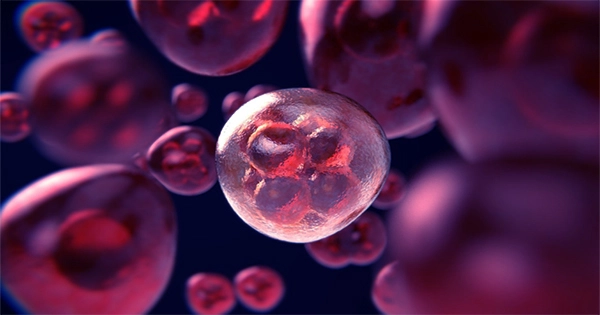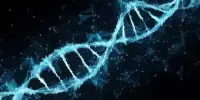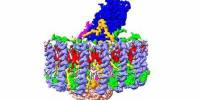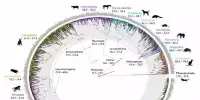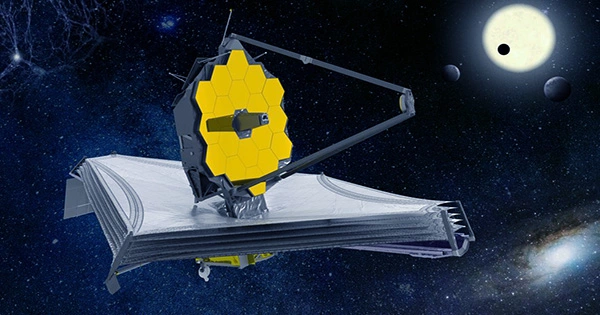What did the first life forms look like? Scientists offer a technique for answering this question in a new Perspective article by investigating the earliest evolution of electron transport chains, a universal metabolic strategy with a very ancient past. The study was published in the Proceedings of the National Academy of Sciences publication.
Despite decades of development, the origin of life remains one of science’s major unresolved mysteries. “The most basic features of biology, that organisms are made of cells, that they pass genetic information through DNA, and that they use protein enzymes to run their metabolism, all emerged through specific processes in very early evolutionary history,” explains Aaron Goldman, Associate Professor of Biology at Oberlin College.
“Understanding how these most fundamental biological systems first took shape will not only give us a better understanding of how life works at the most fundamental level but also of what life is in the first place and how we might look for it beyond Earth.”

The origins of life are typically investigated in laboratories using experiments that recreate early Earth settings and look for chemistries that can produce the same types of proteins and metabolic reactions that we observe in animals today. Because it works with materials that would have been present on the primordial Earth, this is characterized as a “bottom-up” technique. While “prebiotic chemistry” tests have effectively proven how life “may have” begun, they cannot tell us how life “did” originate.
Meanwhile, other research employs evolutionary biology approaches to reconstruct what early life forms might have looked like based on data from modern life. This is known as the “top-down” strategy, and it can inform us about the evolution of life on Earth.
Top-down research, on the other hand, can only go back as far as there are genes that are still conserved in creatures today, and so cannot go all the way back to the genesis of life. Despite their limits, top-down and bottom-up research share the goal of understanding the origins of life, and their responses should ideally converge on the same set of requirements.
Goldman, Laurie Barge (Research Scientist in Astrobiology at NASA’s Jet Propulsion Laboratory (JPL)), and others aim to bridge this methodological gap in a new paper. The authors contend that combining bottom-up laboratory studies on potential pathways to the origin of life with top-down evolutionary reconstructions of early life forms can be utilized to determine how life genuinely began on the early Earth.
In their essay, “Electron Transport Chains as a Window into the Earliest Stages of Evolution,” the authors highlight an important event in modern life that could be explored by merging bottom-up and top-down research: electron transport chains.
Electron transport chains are a sort of metabolic pathway employed by organisms from bacteria to humans to generate useful types of chemical energy. Our mitochondria, for example, contain an electron transport chain linked to our heterotrophic (food-consuming) energy metabolism, whereas plants have a completely different electron transport chain linked to photosynthesis (the generation of energy from sunlight).
Organisms use a diverse set of electron transport chains that are linked to a variety of various energy metabolisms throughout the microbiological world. Regardless of these discrepancies, the authors give evidence from top-down studies suggesting this type of metabolic strategy was adopted by the very first living forms, as well as various models for ancestral electron transport networks that could date back to extremely early evolutionary history. They also review existing bottom-up data suggesting that, even before the development of life as we know it, minerals and early Earth ocean water could have supported electron transport chain-like chemistry.
In response to these findings, the authors propose future study tactics that will combine top-down and bottom-up research on the earliest history of electron transport chains in order to acquire a deeper knowledge of early energy metabolism and the beginning of life in general.
This study is the culmination of five years of work by a multi-institute interdisciplinary team led by Barge at JPL to investigate how metabolic processes might have arisen in geological environments on the early Earth.
Previous research by the team has looked into specific electron transport chain reactions driven by minerals (led by Jessica Weber, JPL Research Scientist), how ancient enzymes may have incorporated prebiotic chemistry in their active sites (led by Goldman), and microbial metabolism in extremely energy-limited environments (led by Doug LaRowe, University of Southern California).
“The emergence of metabolism is an interdisciplinary question, and so we need an interdisciplinary team to study this,” explains Barge. “Our work has combined top-down and bottom-up approaches using techniques from chemistry, geology, biology, and computational modeling, and this type of collaboration will be important for future studies of prebiotic metabolic pathways.”
